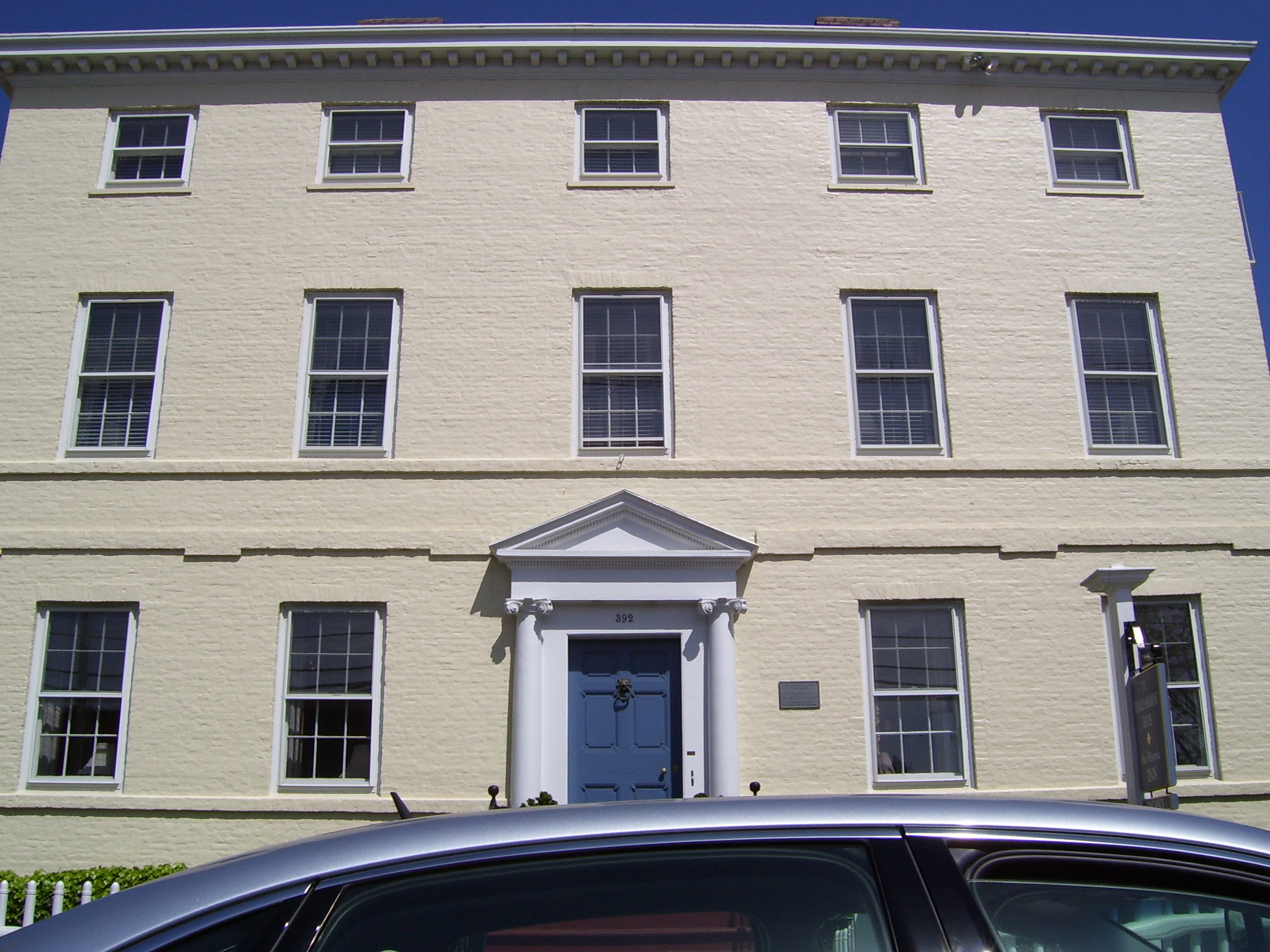- Francis Malbone House
Infobox_nrhp | name =Francis Malbone House
nrhp_type =

caption =
location=Newport, Rhode Island
lat_degrees = 41
lat_minutes = 28
lat_seconds = 58
lat_direction = N
long_degrees = 71
long_minutes = 18
long_seconds = 54
long_direction = W
locmapin = Rhode Island
area =
built =1758
architect=Peter Harrison
architecture= Georgian
added =April 28 ,1975
governing_body = Private
refnum=75000055cite web|url=http://www.nr.nps.gov/|title=National Register Information System|date=2007-01-23|work=National Register of Historic Places|publisher=National Park Service]Francis Malbone House is an historic home at 392 Thames Street in Newport in
Newport, Rhode Island .Peter Harrison , one of colonial Newport's most prominent architects, built the Malbone House in 1758 usingGeorgian architecture styles. In 1975 the house was added to the National Historic Register.History
The Inn building was constructed "in 1760 as a private residence for Colonel Francis Malbone (b.1728 - d. 1785), who made his fortune as a shipping merchant at a time when Newport Harbor was one of the busiest Harbors in the New World. Apparently, the Colonel was not above smuggling dutiable merchandise into the house to avoid the King's customs taxes. Subterranean passages found in the cellar have been traced to a subway leading to the pier where Colonel Malbone moored his fleet. This was a practice common in the Free Port of Newport, and one upon which many Newport fortunes were founded." [http://malbone.com/History.html "History of our Inn"] 21 June 2008. ]
The British occupied Newport during the American Revolution "and seized the Malbone Estate. The mansion was used to store looted gold and treasures, leading to its nickname, "the treasure house."" [http://malbone.com/History.html "History of our Inn"] 21 June 2008. ]
Allegedly a "love affair [occurred between] a young British officer and the colonel's daughter, Peggy Malbone. According to history, the two fell in love just before the war, when the officer would dine at the Colonel's estate. When the war began, and the mansion was seized by the British, the Malbones remained under British occupancy. Officers were not allowed to enter the house or socialize with the colonists, so the lovers were torn apart, forbidden to see one another. The young British officer was captured in an attempt to steal into Newport and to see her and was imprisoned in Massachusetts. According to legend, he finally escaped and for months risked life and limb as a fugitive to return to her. The two were married at the close of the war, and returned to England where he became Lord Stanhope, Earl of Chesterfield." [http://malbone.com/History.html "History of our Inn"] 21 June 2008. ]
After the
American Revolution , "the mansion was returned to the Malbone family who retained ownership until the early 1830's. After the death of Colonel Malbone in 1975, his son, Francis Malbone Jr., a future United States Senator, received ownership of the estate until his untimely death in 1809. In 1770, famed painter, Gilbert Stuart painted the portrait of the younger Francis Malbone and his brother Saunders, located in the grand foyer. The original of this portrait hangs in theBoston Museum of Fine Arts ." [http://malbone.com/History.html "History of our Inn"] 21 June 2008. ]Dr. James R. Newton owned the house in 1850 and "built a brick office on the estate for his doctor's office. The building is now known as "The Counting House" and is the largest Suite at the current Inn." [http://malbone.com/History.html "History of our Inn"] 21 June 2008. ]
The Francis Malbone house has been was restored in the early 1970s, and "the three story brick Georgian mansion retains its architectural heritage and original colonial character to this day. The design of the house is attributed to Peter Harrison, America's First Architect, whose works include the Touro Synagogue and the Redwood Library. The front door of the mansion features a fine Ionic doorway very similar to the Ionic portico of the Touro Synagogue. The floor plan is typical for the era - a broad central hall with a pair of flanking rooms on either side. The hall has a high divided arch, the stairs are fitted with ramped rail and twisted balusters. The stair landing is lit by a Palladian window. The front parlors feature plush paneling, a sign of wealth in colonial times. Two-story pediment mantels adorn the fireplace walls and a broken scroll tops the one in the northwest parlor." [http://malbone.com/History.html "History of our Inn"] 21 June 2008. ]
In 1989, the house reopened the estate "as an Historic Inn, offering nine guest rooms. In 1996, they embarked on building a sensitively designed addition, which has allowed the inn to expand to eighteen luxurious guestrooms." [http://malbone.com/History.html "History of our Inn"] 21 June 2008. ]
References
Wikimedia Foundation. 2010.
